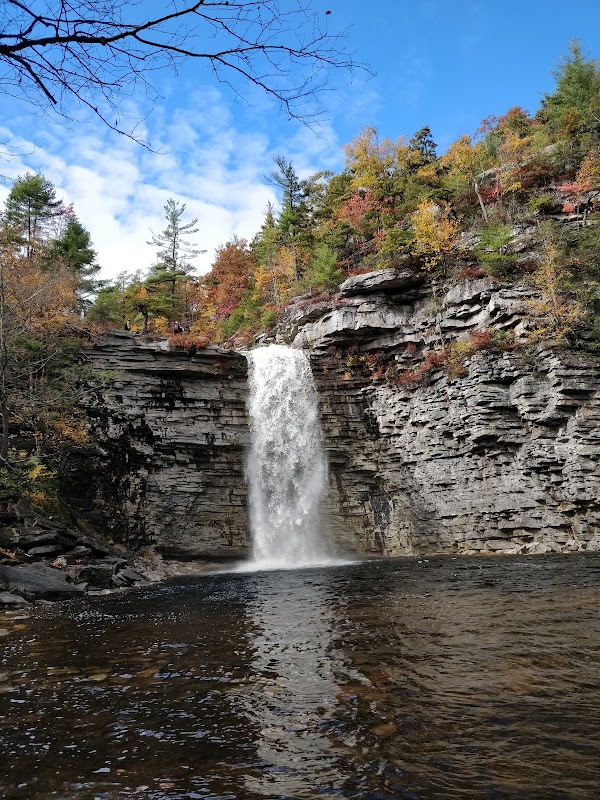
Paddling the Meadowlands: Urban Wilderness in the Shadow of NYC
Discover the surprising wilderness of the Meadowlands, a network of tidal waterways and marshes just outside New York City. Paddling here offers a unique mix of urban edge and tranquil nature, perfect for those seeking an accessible yet immersive outdoor adventure.
Check Tide Schedules
Tides control water levels and current strength significantly; plan your paddle around slack tide to ensure easier navigation and safer conditions.
Wear Sun Protection
Open waterways reflect sunlight intensely—use waterproof sunscreen and a brimmed hat even on overcast days.
Use Waterproof Gear
Water splashes are inevitable; waterproof dry bags keep your essentials safe and dry on the marshy waterways.
Be Mindful of Wildlife
Maintain distance from nesting birds and beavers to avoid disturbing the fragile ecosystem that thrives here.
Paddling the Meadowlands: Urban Wilderness in the Shadow of NYC
Stretching just a few miles from the clamor of Manhattan’s skyline, the Meadowlands offer a surprising wilderness playground for paddlers seeking an urban escape with practical adventure. Here, waterways dare you to chart a course through winding creeks and marshes where city noise fades beneath the rush of water and cries of wetland birds. Put in at one of the few launch points—like Richard W. DeKorte Park—and prepare for an easy but engaging paddle across a patchwork of tidal channels and estuary, where currents push your kayak forward and the salt marsh grasses whisper along the banks.
Expect roughly 3 to 5 miles of paddling, depending on your route, with flat water that welcomes beginners and seasoned paddlers alike. The terrain is entirely waterborne but framed by rugged marshland trails and occasional forested spots, giving a glimpse of nature’s persistence in post-industrial space. Keep an eye out for raptors circling high and beaver lodges tucked away under alder branches – the Meadowlands is fiercely alive beneath its quiet surface.
Timing matters. Paddle during early morning or late afternoon when winds are calmer and light softens the grey urban horizon. Bring waterproof gear and prepare for sudden gusts pushing the water’s edge into unexpected splashes. Hydration and sun protection remain key despite the surrounding greenery; the reflected water intensifies exposure.
Launch fees are minimal or free, with parking available but limited during weekends. Kayak rentals or guided tours offer practical options if you lack your own craft. Unlike traditional parks, the Meadowlands demands respect: tides are a natural clock and the channels shift subtly. Familiarize yourself with the tide charts before you set out.
Navigating here is an act of partnership with a landscape that refuses to be tamed. Not quite wilderness, not quite cityscape, the Meadowlands offer a rare stage for the everyday adventurer to explore water routes peppered with industrial relics and vibrant wetlands alike. This is paddling as a practical excursion and mindful engagement—perfect for those craving a slice of nature’s pulse without straying far from the city.
Prepare well, paddle smart, and allow the Meadowlands to challenge you quietly but insistently, in the shifting domain where urban grit meets natural grace.
Nearby Trips
All Adventures
Boat Charters
Water Activities
Adventures near Secaucus, New Jersey
Discover the unique and memorable adventures that make Secaucus, New Jersey special.
Frequently Asked Questions
Where are the best launch points for paddling the Meadowlands?
Richard W. DeKorte Park in Lyndhurst is one of the most popular launch sites, offering parking and clear access to tidal waterways. Other smaller access points exist but may require local knowledge or boat transport.
Are there guided tours available in the Meadowlands?
Yes, several outfitters near Secaucus and Lyndhurst offer guided kayak tours, which can be beneficial for beginners or those unfamiliar with tide patterns and local ecology.
What wildlife can I expect to see while paddling?
Expect to encounter great blue herons, ospreys, egrets, muskrats, beavers, and occasionally foxes on the shore. Migratory birds are common in spring and fall, making for excellent wildlife observation.
Is the water safe for paddling in terms of pollution?
While the Meadowlands have a history of industrial impact, ongoing conservation efforts have greatly improved water quality. Still, paddlers should avoid ingestion of water and practice good hygiene.
What are the tide conditions I should be aware of?
Tides influence water levels and currents significantly. Check local tide charts before your trip; paddling during slack or rising tide is recommended to avoid getting stranded by low water.
Can beginners safely paddle here?
Yes, the flat water and minimal elevation change make the Meadowlands accessible to beginners, provided they are prepared for navigating tides and are comfortable in a kayak.
Recommended Gear
Sit-on-Top or Touring Kayak
Stable and maneuverable kayaks facilitate easier paddling through narrow tidal channels and marshy waters.
Personal Flotation Device (PFD)
Required safety gear for all paddlers, ensuring safety if you capsize or encounter strong currents.
Waterproof Dry Bag
Protect personal items from splashes and potential submersion, keeping cameras, phones, and snacks safe and dry.
Sun Hat and Sunscreen
Crucial during summer months when reflected water intensifies sun exposure; helps prevent sunburn and heat exhaustion.
Local Insights
Hidden Gems
- "Ramsey's Point—a rarely visited spot offering quiet channels with rich birdlife"
- "The old remains of the Hackensack Meadowlands railways visible from water"
- "Beaver dams hidden under copse edges, a living sign of ecosystem resilience"
Wildlife
- "Bald eagles have been spotted occasionally during winter months"
- "Northern water snakes often bask on fallen logs"
- "Great horned owls inhabit scattered forest patches"
History
"Once a sprawling industrial dumping ground, the Meadowlands have undergone extensive restoration since the late 20th century, shifting toward conservation and public recreation."
